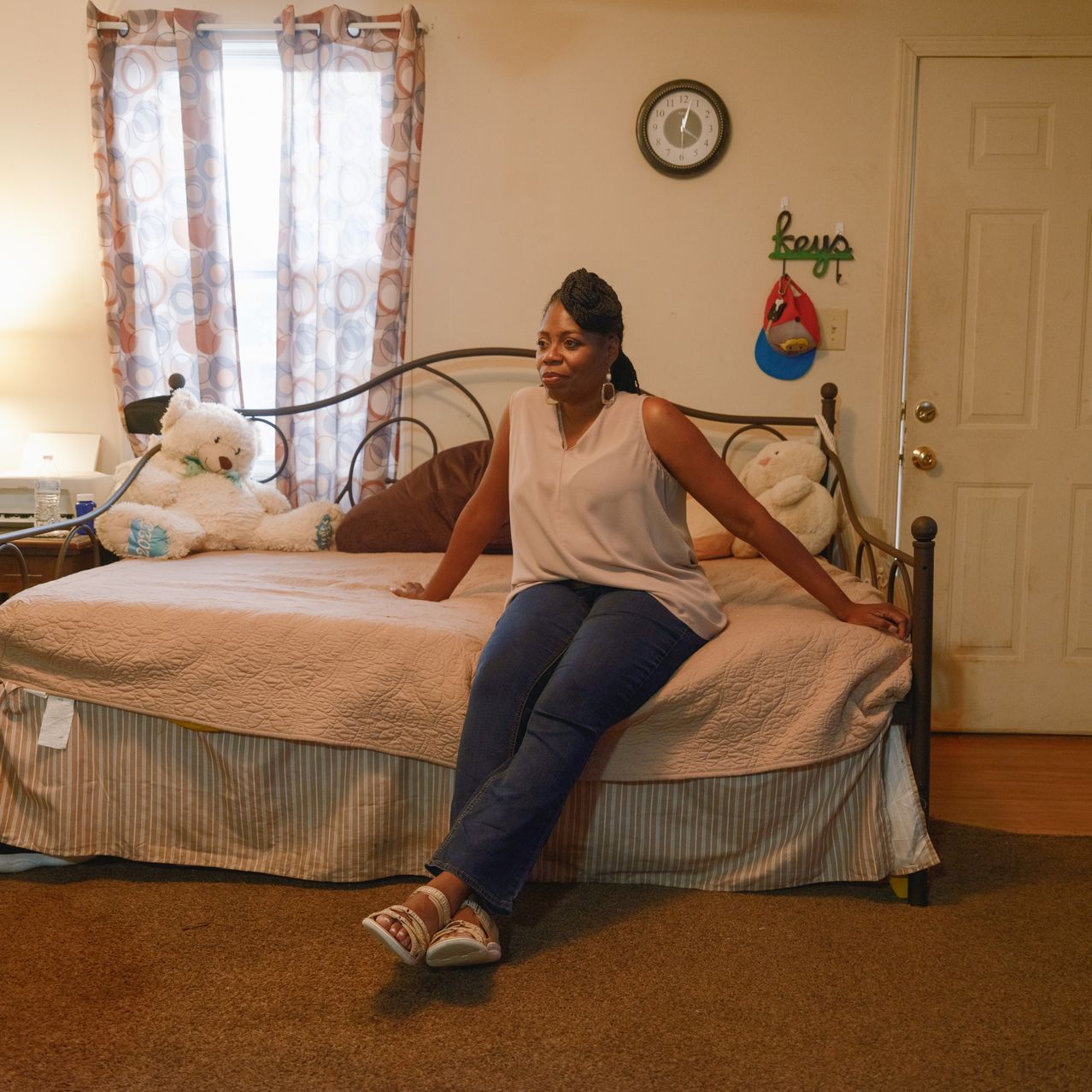
Millions of borrowers across the country have had all or some of their student loans eliminated by the federal government
Getting tens of thousands of dollars in student debt canceled isn’t guaranteeing an immediately better financial life for Americans.
So far, about 943,000 people have had their loans eliminated through the federal government’s Public Service Loan Forgiveness plan, with balances averaging $72,000 when they are cleared. Nearly two million more had their student debt erased through programs for disabled borrowers or under income-driven repayment plans.
An additional 1.3 million borrowers with $20 billion in loans have been approved for discharge through a program aimed at students who were misled by their colleges about things like job prospects. Many more are set for relief soon or waiting in limbo as further plans face challenges in the courts.
The plan has been welcomed by advocacy groups and Democrats but has received pushbackfrom Republican lawmakers and some economists, who have criticized the cost of debt cancellation and warn that it could force future spending cuts or tax increases.
In interviews, the borrowers who have had their loans wiped away say the act has given them more freedom or helped them sleep easier at night. But it hasn’t been a panacea for all of their financial stress.
Borrowers who were late on payments or even defaulted on their student debt are often still digging out of other financial problems, including with their credit scores or other forms of debt. And since many weren’t making regular student-loan payments, they don’t find themselves with a new stream of cash just because the monthly bill stopped coming.
Borrowers with processed public service loan forgiveness discharges

AMOUNT OUTSTANDING
68
47
11
$0.08
billion
0.9
0.3
’22
’23
’24
2019
’20
’21
NUMBER OF BORROWERS
943
670
2
thousand
165
12
5
’22
’23
’24
2019
’20
’21
Note: Shows cumulative numbers; data as of May 16, 2024, and as of June 30 for each prior year.
Source: Education Department
“For the typical borrower, the forgiveness is nice but not life-changing,” said Constantine Yannelis, an associate professor of finance at the University of Chicago who studies household finance.
Annetta Walker borrowed $36,000 in the early 1990s to help her get a graphic-design degree at the now-defunct International Academy of Design and Technology in Chicago. That amount more than doubled as she struggled to pay and interest accrued.
In February 2023, she received a letter stating she was approved for her loans to be discharged. The balance, $82,000, was wiped clear this May.


Annetta Walker's student loans were discharged earlier this year; she says she is still far from her financial goals.
She recently lost her job as a legal assistant and said she feels even further from her goals now.
“I hope one day I’ll be able to buy a home and stop living this transient lifestyle,” Walker said. “And I’m hopeful for some sort of generational wealth for my kids.”
Savings rate
Economists say it is hard to draw broad conclusions just yet, since borrowers have a range of spending habits and earnings. In addition, the bulk of those who have had their loans forgiven are still new to life without having to make the payments.
In a July study, Yannelis and others found that borrowers experiencing student-loan forgiveness largely replaced it with other forms of debt.
Auto-loan borrowing rose by $230, and credit-card borrowing by $220, on average. Home-loan debt also increased, which could boost wealth in the long term.
The researchers found that borrowers whose debt was forgiven experienced almost no change in their credit scores, likely because they were taking on new loans that countered the benefit of the old ones disappearing. Many also already had a bump when the federal government paused certain student-loan payments during the pandemic, potentially limiting the impact now that their balances are erased.
Kimberly Acquaviva, a professor at the University of Virginia School of Nursing, took out around $90,000 in loans to earn her bachelor’s, master’s and Ph.D. from the University of Pennsylvania in the 1990s.


Acquaviva earned a nice living—about $150,000 at the time her debt was wiped—and made $862 in monthly student-loan payments. Through much of her career, she and her wife shared one car, limited their vacation travel and lived in a more affordable, less convenient neighborhood.
Acquaviva learned her loans would be forgiven shortly before her wife died of cancer, and said it eased some of her panic around raising their son in a one-income household.
“It took some of the sandbags off of my back. But it was not, ‘Oh yay, now we can do a fun thing.’ It was, ‘OK, now I’m not in as bad a situation as I could have been,’ ” Acquaviva said.
Acquaviva, now 52 years old, remarried two years ago. She and her husband give priority to paying down their house and saving for retirement when they have some extra cash. They are also helping her stepdaughter pay off some student loans and hope to help her son, who is finishing up a master’s this winter.
“What has changed isn’t so much our quality of life but our sense that we have some choice of how to use that $900 a month,” she said.
For profit
The Biden administration has been particularly aggressive in trying to get loans forgiven for students who went to certain for-profit schools, saying the borrowers were duped by predatory institutions that lied about the value of their programs.
In May, the administration said it would relieve nearly 317,000 former Art Institute students of $6.1 billion in debt, saying the for-profit school misrepresented employment prospects and career support for students.
Jett Duran studied game design at the Art Institute in Phoenix beginning in 2014 but dropped out a few months shy of graduation when his father fell ill. Duran initially made $8 an hour at JCPenney before landing a job as an office manager, then in sales and a corporate role. To keep his costs low, he lived with his in-laws for a while.


“I make my payments, regardless if I have to sell a foot,” Duran said of his mentality during much of his 20s.
Duran and his wife bought a place of their own in the summer of 2020, when student-loan payments were paused for the pandemic.
Duran, 28, now works as a 3-D artist for Trackman, which designs golf simulators, earning $22 an hour with some benefits. Instead of directing $300 each month to his student loans, he puts those funds toward gas money and diapers for his 10-month-old daughter. He is planning a vacation next year to Puerto Vallarta, Mexico.
“I’m happy I get to be in this financial position where I can actually make memories with my family,” Duran said.
Write to Terell Wright at Terell.Wright@wsj.com and Melissa Korn at Melissa.Korn@wsj.com